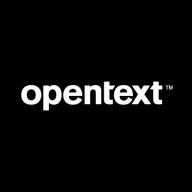

OpenText ZENworks Configuration Management and Microsoft Intune compete in IT management solutions. Although OpenText ZENworks holds a pricing edge, Microsoft Intune leads with an extensive feature set and strong customer satisfaction.
Features: OpenText ZENworks Configuration Management focuses on automated configuration, desktop management, and comprehensive system imaging and patch management. Microsoft Intune provides mobile device management, security integration, and seamless integration with Microsoft 365, along with comprehensive policy control.
Ease of Deployment and Customer Service: OpenText ZENworks Configuration Management ensures a straightforward deployment process with effective centralized management tools but may lack scalability. Microsoft Intune supports an adaptable cloud-based deployment model and provides comprehensive customer support, with advantages in scalability and extensive support.
Pricing and ROI: OpenText ZENworks Configuration Management offers lower initial setup costs, appealing to budget-conscious environments. Microsoft Intune presents higher initial expenses but offers greater ROI through enhanced capabilities and integration efficiencies, with its long-term benefits justifying the expense.
| Product | Market Share (%) |
|---|---|
| Microsoft Intune | 9.2% |
| OpenText ZENworks Configuration Management | 1.5% |
| Other | 89.3% |

| Company Size | Count |
|---|---|
| Small Business | 116 |
| Midsize Enterprise | 46 |
| Large Enterprise | 152 |
Microsoft Intune provides centralized management of mobile devices and applications, ensuring security, compliance, and productivity through integration with Microsoft services like Microsoft 365 and Azure Active Directory.
Organizations use Intune for managing mobile devices and applications, enhancing security and compliance across platforms. With features like single sign-on, conditional access, and zero-touch deployment via Autopilot, it facilitates efficient operations. Intune's scalability, easy enrollment, and capabilities such as remote wipe support diverse device management, offering robust data protection and efficient operation. Despite its features, improvement areas include reporting, compatibility with non-Microsoft devices, and better support for macOS and Linux devices.
What are the key features of Microsoft Intune?
What benefits should users look for in reviews?
In industries such as finance, healthcare, and education, Microsoft Intune is implemented to ensure secure and compliant device management. Companies leverage its capabilities to deploy security policies and manage both corporate-owned and BYOD environments, facilitating a unified approach to data protection and compliance.
We monitor all Configuration Management reviews to prevent fraudulent reviews and keep review quality high. We do not post reviews by company employees or direct competitors. We validate each review for authenticity via cross-reference with LinkedIn, and personal follow-up with the reviewer when necessary.